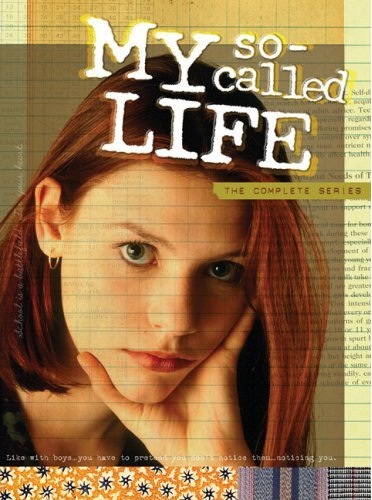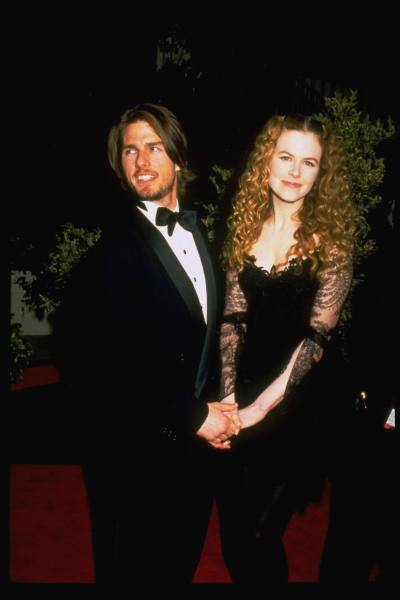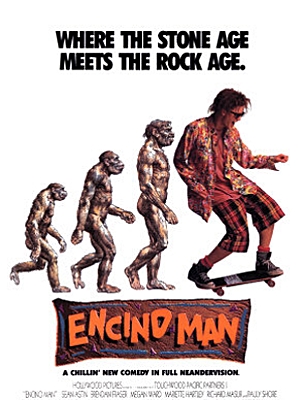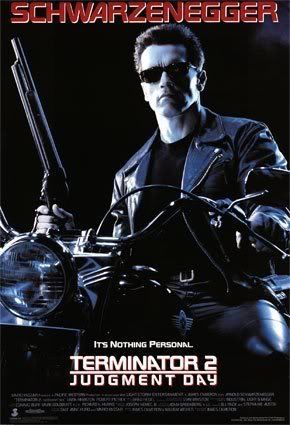
Well, children of the 90s, it's that time again. I've had some email requests from readers about some of their favorites 90s snacks, so I thought we were due for another discontinued 90s food roundup. If these commercials bring back some cravings, you're probably out of luck. Most of these foods, despite their hearty nostalgic value, have been discontinued somewhere along the way. On a good day, you might be able to find a couple of these on grocery store shelves outside of the US, but for the most part any cravings for these goodies will go unfulfilled.
For one reason or another, the producing companies of these delicious (though often un-nutritious) treats decided it just wasn't profitable enough to keep churning them out on their assembly lines. In our day some of these might have had impressive cafeteria trade value, but they've since dropped in kid coolness capital. All we have left is our memories...and for some of us, imbalanced blood sugar and an increased risk for early onset diabetes. We weren't the most health-conscious generation of kids, but we knew what we liked. Food manufacturers must have known, too, as they supplied us with copious amounts of nutritionally devoid options like these:
Pop QwizFor one reason or another, the producing companies of these delicious (though often un-nutritious) treats decided it just wasn't profitable enough to keep churning them out on their assembly lines. In our day some of these might have had impressive cafeteria trade value, but they've since dropped in kid coolness capital. All we have left is our memories...and for some of us, imbalanced blood sugar and an increased risk for early onset diabetes. We weren't the most health-conscious generation of kids, but we knew what we liked. Food manufacturers must have known, too, as they supplied us with copious amounts of nutritionally devoid options like these:
At the time, this seemed like a true technological innovation in kid's snack food. Pop Secret released this kid-pleasing product in the early 90s, proving that children are the only group of consumers willing to eat incredibly unnatural-hued foodstuffs. Pop Qwiz was mostly gimmick and little substance, but the gimmick was more than enough to hold our attention and prompt countless tantrums in the popcorn aisle of the supermarket. Hey, I'd still be willing to throw myself on the ground and wail inconsolably for a bag of Pop Qwiz.
The name sounds far more educational than the value of the product warrants. I guess that's why they misspelled "Qwiz", to let us all know this popcorn snack was not academically relevant, nor would it offer us extra credit opportunities. Instead, the concept was rather simple: each bag of Pop Qwiz featured a different food-colored mass of kernels. The packaging was unassuming, leaving us kids to impatiently speculate on the bag's contents while still in the microwave. Would it be blue? Green? Purple? This eagerness for answers undoubtedly led to many oil-based burns.
Doritos 3-D
Our good friends at Doritos had no shortage of creative nacho-flavored chip incarnation ideas in the 90s. Every few weeks or so, it seemed they were debuting a new member of the ever-growing Dorito family. The short-lived Doritos 3-D were especially popular, literally adding a new dimension to our Dorito consumption. They fit in well with the "X-Treme!" trends in 90s advertising and product promotion, but they clearly couldn't stand the test of time. Air-filled pockets of salty goodness can only hold our attention for so long.
Planter's Cheez Balls
I know this ad is older than the 90s, but it was the best I could find. I think at a certain point, these defied advertising. They were pretty ubiquitous as a nutrition-free party snack food
Remember when Planter's used to make a whole bunch of other snack foods? I always thought it a bit weird that Mr. Peanut veered from his legume comfort zone to promote all classes of salty snacks. Cheez Balls (and Cheez Curls, and the briefly available PB Crisps) were once a universal party food. People were forever setting these unnaturally orange puffed balls out in bowls at social gatherings. There was something uniquely satisfying to popping off the tub's cap and hearing the release of suctioned air when you pulled the foil top and released the Cheez Balls into the wild. Unfortunately, you'll have to settle for the generics if you're craving Cheez Balls these days; Planter's has since discontinued the snack. You can, however, get a no-brand version at Sam's Club or Costco if you really need to satisfy your urge. Unfortunately, they're only available in giant tub sizes.
French Toast Crunch
French Toast Crunch Ad- Bazooka Gum
Uploaded by a90sfan. - Classic TV and last night's shows, online.
90s children's cereal trends show an unprecedented obsession of taking ordinary foods, miniaturizing them, and then convincing us they're a perfectly natural part of a balanced breakfast. French Toast Crunch was a perfect example, giving us bowlfuls of tiny French toastlets that we were expected to drown in milk and eat with a spoon. They didn't taste all that much like French toast, but they were a novelty and were thus deserving of our attention.
If you're lucky enough to live in Canada, you've still got access to this delicious breakfast treat. Publicly-funded health care comes second to the allure of starting every day with a big bowl of miniature processed imitation egg-soaked cinnamon bread? Actually, scratch that, make health care first. Daily intake of this sugar-laden cereal probably warrants regular doctor's visits.
Sprinkle Spangles
Here we go again with the miniatures. Sprinkle Spangles were a sort of Cookie Crisp knockoff, featuring sprinkle-spangled miniature sugar cookies and passing them off as cereal. How any of us ever got this one into the grocery cart and past our parent's wary watchful eye is beyond me, but the concept has yet to lose its appeal for me. I still think a bowl of these would really hit the spot when I'm craving something sweet.
Cheetos Paws
Like Doritos 3-D, Cheetos came out with an alternately shaped version of its original product and tried to pass it off as something new. Naive as we were as kids, we were ecstatic to find out our favorite orange finger-dying munchies now came in an easily grabbable pawprint shape. It was sort of like a crystal ball, really. It showed us exactly what our hands would look like if we engaged in gloveless Cheeto consumption. Well, the color part, at least. They usually didn't morph into paws.
Sodalicious Fruit Snacks
Sodalicious wins for best made-up food flavor descriptor. It's not soda per se, but it is delicious in a way similar to soda. How can we hybridize these words? Genius, I tell you.
Magic Middles
I'm getting a little drooly just watching that commercial. The name is right on: those middles were pure, sweet magic. Those Keebler elves sure are crafty. They realized they could hide even more delicious chocolate inside of an already chocolate-laden cookie, obscuring the extra sugar content from our parents. Oh hey, I'm just eating this chocolate chip cookie. With a candy bar's worth of chocolate inside. Ha ha! Gotcha.
Dannon's Sprinklins
We weren't allowed much junk food at my house, so we had to settle for the best imitation. That is, foods that incorporated sugary goodness without actually being all that sugary or good themselves. In this case, we had to suffer through some does-a-body-good yogurt in order to get to the good stuff: sprinkles. I challenge you to find a kid who doesn't like sprinkles. They're pure sugar and they're colorful. It's basically a kid's confectionery dream. I always utilized good sprinkle strategy. I'd try to conserve as many as I could for the end, but to a healthy food-disparaging kid, I'd usually have to give in and spread them throughout the cup. I just couldn't stomach it without the "Sprinkl'" part.
Like many of you, I didn't notice the gradual disappearance of these goodies from my grocery store shelves. Over time I'd eventually notice that some of my old childhood favorites had gone the way of the Dunkaroos. Unless they decide to ignore low profit margins and get swept up in the 90s nostalgia, it's unlikely we'll be seeing most of these gracing our supermarket aisles any time soon. We'll just have to settle for our delicious memories. Either that, or trying to track down some packages on Amazon or eBay. It just comes down to how seriously you consider expiration dates.































